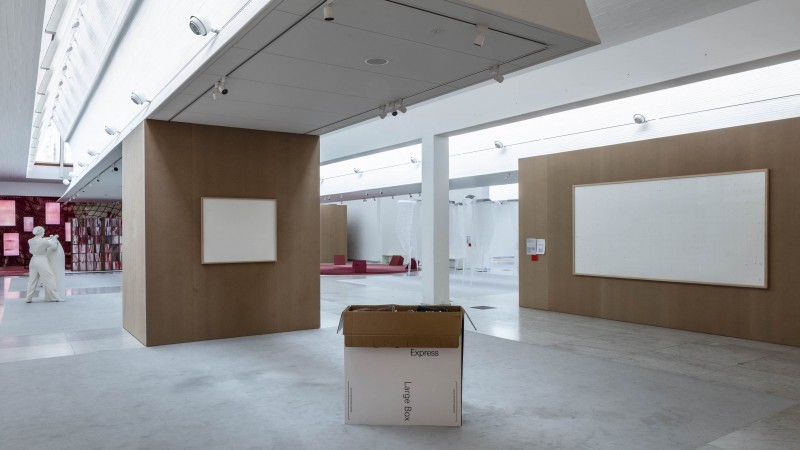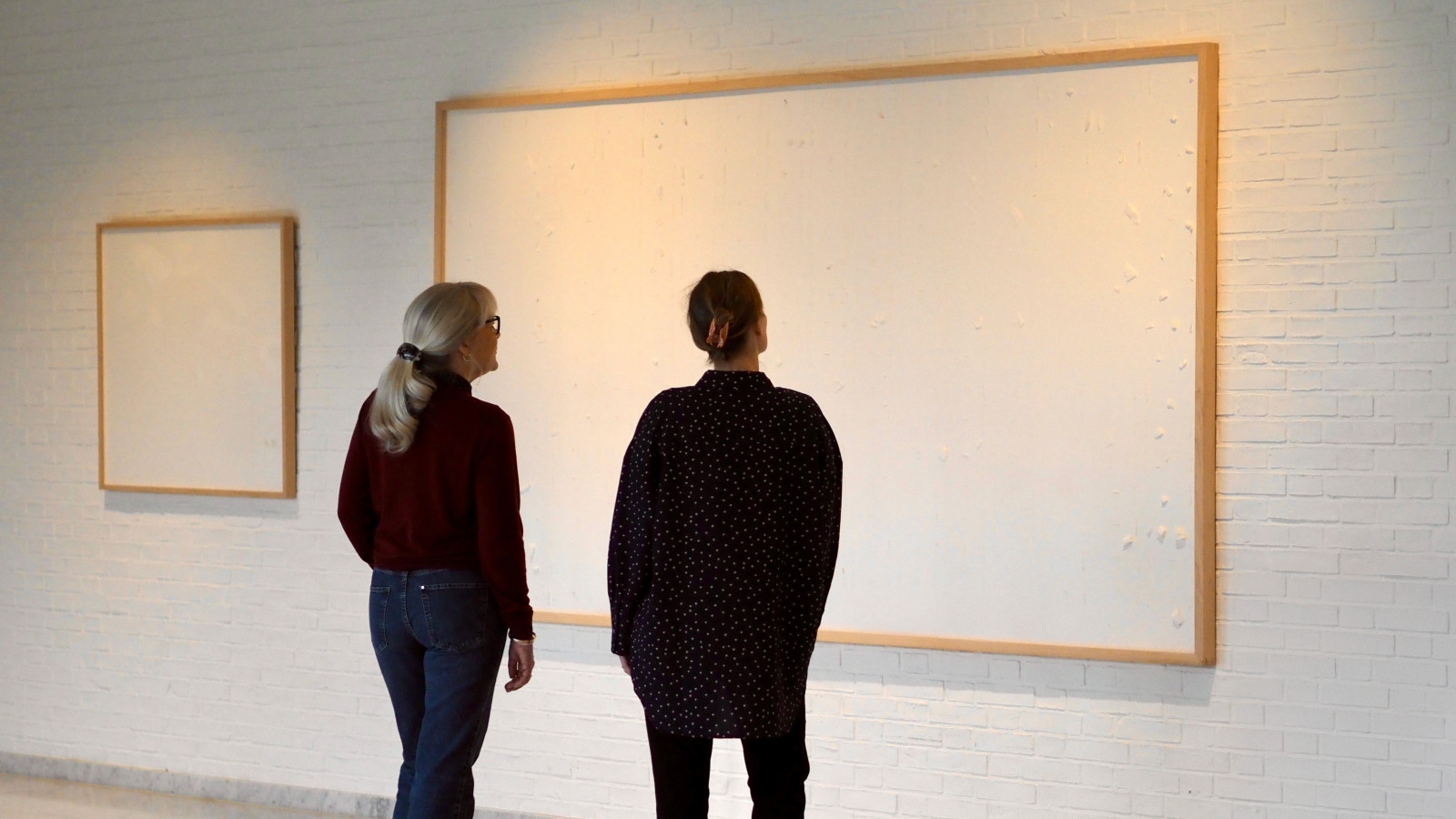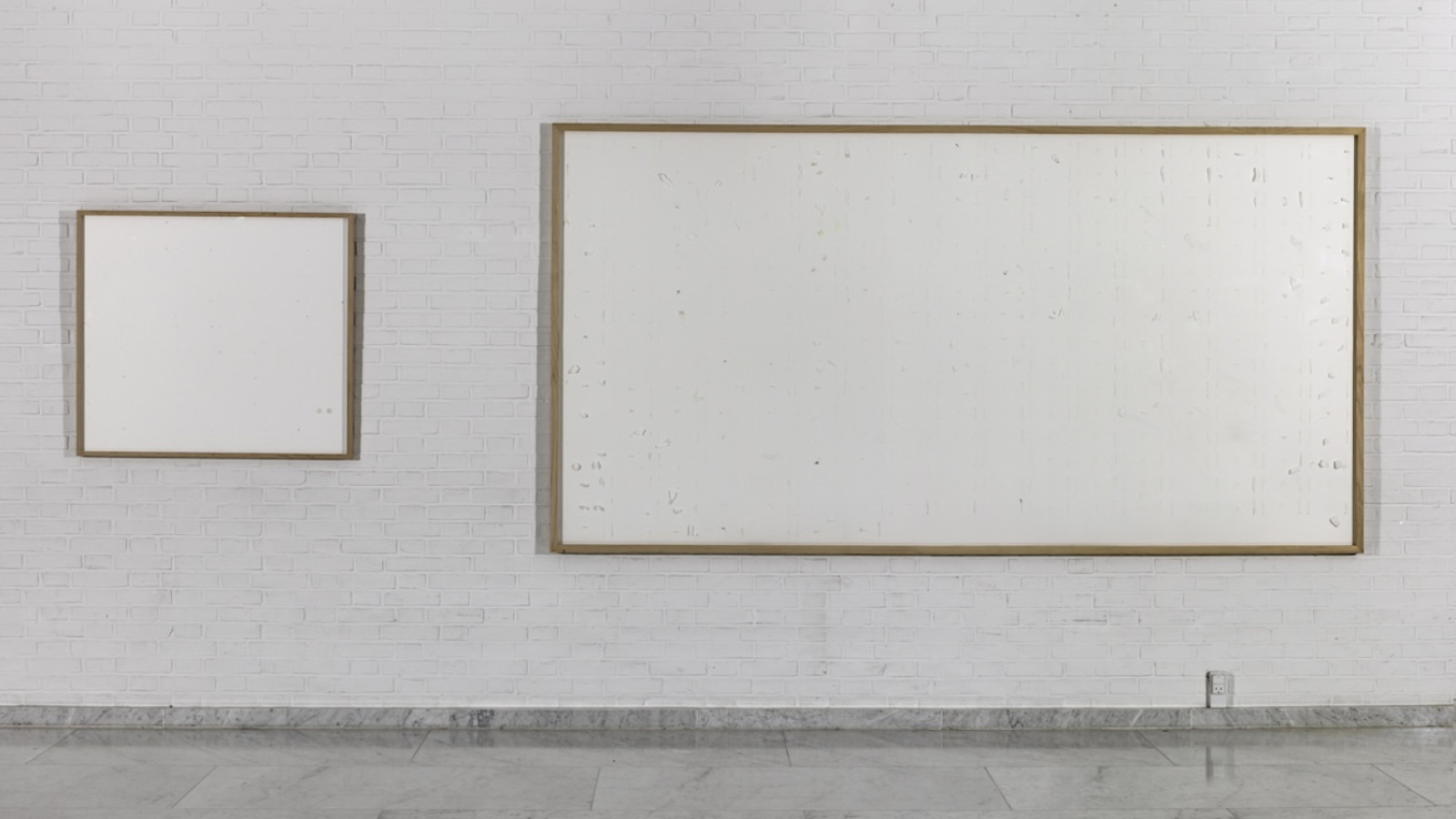



Take the Money and Run: Clarification of Terms and FAQ
Here is a run-down on the case surrounding Take the Money and Run, along with a fact box and a clarification of terms.
In Brief
The exhibition Work it Out opened at Kunsten Museum of Modern Aalborg in 2021. As part of the exhibition, the museum wished to feature two existing works by the artist Jens Haaning: An Average Austrian Annual Income (2007) and An Average Danish Annual Income, which had originally been exhibited at Heart in Herning in 2010.
For the new exhibition at Kunsten, the annual income was updated to the 2021 rate, so the two works featured framed banknotes with a total value of DKK 532,549.
Kunsten transferred the necessary funds to the artist’s personal bank account, having entered into a contract with Jens Haaning stipulating that he would return the money to Kunsten when the exhibition closed on 16 January 2022.
Just prior to the opening of the exhibition, Kunsten received an email from Jens Haaning, informing the museum that, instead of the work agreed upon, he had created a new piece entitled Take the Money and Run. Museum staff then opened the transport crates only to discover that the picture frames, which should have contained the money, were empty.
The new work was presented as part of Work It Out alongside other works by renowned contemporary artists.
When the exhibition ended, Jens Haaning did not return the money as stipulated in the contract, prompting Kunsten to file a civil lawsuit.
The museum had provided the money as a loan to update the works with contemporary figures. However, upon arrival at the museum, it quickly became clear that a different work had been delivered: the frames were empty, the money was gone, and Jens Haaning proclaimed that he had created an entirely new artwork: Take the Money and Run. As a result, Kunsten filed a lawsuit against Haaning in the Copenhagen City Court over the missing money. The museum won the case, but Haaning appealed to a higher court.
In 2024, the case was settled, and Take the Money and Run became part of Kunsten’s collection. The artwork was acquired through a donation from the Obel Family Foundation and is now recognized as part of Danish art history.
With support from the Obel Family Foundation, Kunsten acquired Take the Money and Run on May 15, 2024, from the artist Jens Haaning.
Take the Money and Run is a piece of institutional critique and conceptual art, where context and surrounding factors play a central role in the artwork itself, critically questioning and challenging the structures that shape society and individuals. The artwork has left a significant mark on contemporary art in the 2020s. Within Kunsten’s collection, it is now placed alongside another work by Jens Haaning, Turkish Jokes (1994), which the museum acquired in 2015. Additionally, the work establishes a natural and contemporary connection to Kunsten’s large international Fluxus collection.
Fact Box
Collection v. loans
When Danish museums exhibit works of art, either they come from the museums’ own collections or are loaned. When loaning a work, a museum does not own it. It is returned to the owner(s) after the exhibition.
The museum’s own collection is owned by the museum – in other words by everyone in Denmark, given that Kunsten is a public institution. The museum has a budget for the acquisition of works of art for its collection. Usually, though, Kunsten acquires a specific new work by applying for financial support from foundations.
Loans and exhibition fees
When the museum does not exhibit works from its own collection, the museum borrows existing works from private collectors, other museums, galleries and/or artists. When (as is the case of Take the Money and Run) a museum loans the work of an artist, the museum pays the artist an exhibition fee, for which they apply to the state. In addition, the museum covers all costs: for example, for transport and preparation of the work. In certain cases, in which an artist further develops a work for the purpose of a specific exhibition, Kunsten also covers the additional expenses involved.
In other words, it was Kunsten’s duty to return the work at the end of the exhibition – minus the banknotes. In its contract with Haaning, Kunsten had agreed to make the money available to the artist solely for the run of the exhibition.
Haaning’s work is a loan
Exhibition fees are statutory (Section 6 of Danish Act on Visual Arts and Artistic Design) and must be paid to artists no later than 14 days after the final day of an exhibition period. The size of an exhibition fee is determined by the value of the work, the venue, the duration of the exhibition etc.
Haaning would receive a fee of DKK 10,000 from Kunsten and an exhibition fee of approximately DKK 30,000 from the Danish state. Kunsten would also cover all costs associated with transport and updating the work, along with other expenses: for example, for communication related to exhibiting the artist’s work (though in principle no more than EUR 6,000).
Fee
Fees are negotiated between the artist and the museum. Kunsten has voluntarily entered into an agreement with the Association of Danish Museums, Danish Visual Artists (BKF), the Danish Artists’ Trade Union and UKK - Organisation for Artists, Curators and Art Mediators. The agreement guarantees artists who exhibit their works at, or loan their works to Kunsten a minimum fee for the work that their participation in a particular exhibition entails.
FAQ
What did Haaning previously do with the money when the work was exhibited?
The work was previously exhibited at the exhibition Socle du monde at HEART in Herning in 2010. In this case, Nordea and HEART made the money available; the artist paid it back at the end of the exhibition.
We have also collaborated with Jens Haaning on previous occasions. In 2017, Kunsten acquired his work Turkish Jokes (1994) for its collection. Jens Haaning is an established, highly respected contemporary artist.
Did the high level of press coverage lead to more visitors?
There were many visitors to the museum after the opening of the new exhibition, which included Haaning’s work, but this is always the case when a major exhibition opens. Of course, we hope that more people are now aware of both Aalborg and Kunsten; we are also always delighted when more people get the urge to experience modern art. However, we hope that this interest will extend to culture as a whole and to more discussions about modern art: not simply to Take the Money and Run.
What is your opinion of the work?
Unfortunately, our visitors never saw the original work featuring the framed banknotes. The original work was thought-provoking, focusing as it did on wage differences in the EU, and also revealing in totally concrete terms what we gain materially from selling our time to an employer: in contrast to studies that show that many people believe that meaningfulness and job satisfaction are more important than salary.
The new work had another effect; it was an experience in its own right. It kindles new thoughts and discussions about the working conditions of artists, about the major role money plays in our everyday lives and the valuation, power and status associated with money. This led many people to take a stance on modern art and gave them an experience of art. Basically, that is the raison d’être for Kunsten and other public art museums.
What does it mean for Kunsten to be able to acquire the artwork in May 2024?
The Obel Family Foundation has untangled the Gordian knot that neither Jens Haaning nor Kunsten has been able to solve since the exhibition "Work it Out" in 2021, in which the artwork "Take the Money and Run" was included.
It is important for contemporary art, for the artist Jens Haaning, for Kunsten Museum of Modern Art Aalborg, and for the artwork "Take the Money and Run" that a solution has been found. This means that Jens Haaning's "Take the Money and Run" (2021) is secured as part of Kunsten's collection and can be displayed to the public.
Jens Haaning – Take the Money and Run, 2021. © Niels Fabæk, Kunsten Museum of Modern Art Aalborg
Jens Haaning – Take the Money and Run, 2021. © Niels Fabæk, Kunsten Museum of Modern Art Aalborg
Top photo: Jens Haaning - Take the Money and Run (2021) © Jens Haaning / VISDA. Foto: Kunsten Museum of Modern Art
